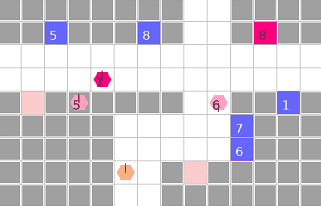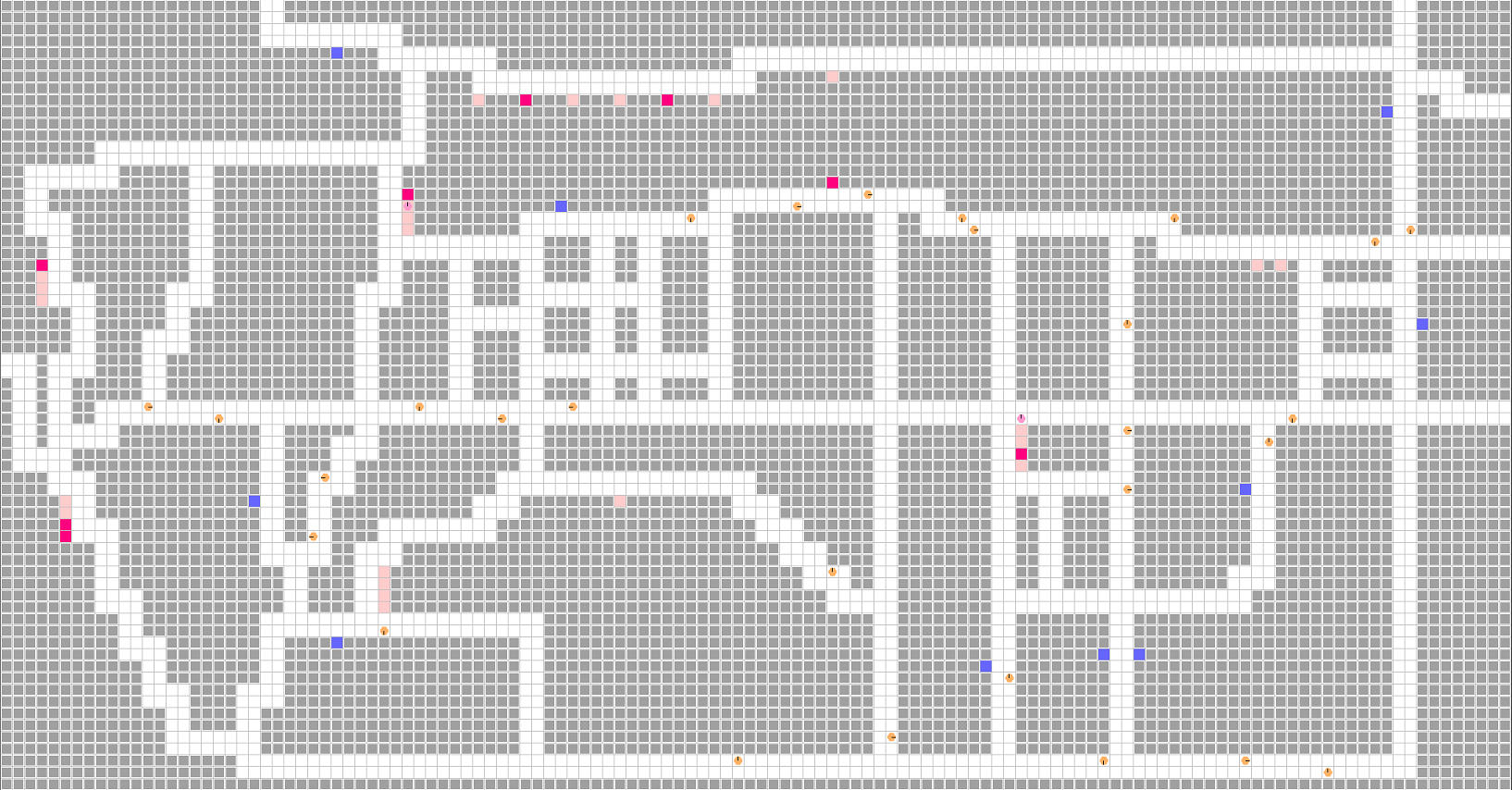NOTE: This environment is not under maintenance for now, as we are currently developing a new graph-based multi-robot delivery environment!
We modified the robotic-warehouse environment RWARE[1] to create a gird-based robotic-delivery environment.
Below is a rendering of 4 agents with random policy in small (9x14) RDLVY envrionment.
Our research will be done on a map modeled after Sangam-dong, Seoul, Repulic of Korea.
cd RDLVY
export PYTHONPATH=$PYTHONPATH:.
python rdlvy/robot_delivery.py- N (equal to
request_queue_size) number of packages are generated across multiple warehouses. - Multiple packages can be stored in each warehouse.
- N number of destinations are generated.
- When an agent with a package arrives at a destination, the package is automatically unloaded and rewards are given.
- That destination is then removed and a new destination is created from among the potential goal candidates.
- Agents load packages from the warehouse (start) to deliver them to the destination (goal).
- Agents can carry multiple packages at a time.
- Packages do not have designated destinations.
request_queue- Packages are generated at one of the
start_candidates(warehouse) and added to therequest_queue. - Packages are removed from the
request_queueonce they are picked up by an agent. - When a package is delivered, a new package is generated and added to the
request_queue.
- Packages are generated at one of the
starts_with_package_grid- A 2D grid map which represents the number of packages residing in a warehouse.
- The highway represents cells that agents can travel on, including goal and start cells.
- A highway cell contains information about the directions an agent can travel to (
highways_info). - If an agent chooses an action that is illegal, no action is taken.
- A highway cell contains information about the directions an agent can travel to (
- Agents can go straight or turn right on any highway cell.
- Agents can turn left or make a U-turn only at intersections.
Please refer to the following rules to modify the layout of the map.
- Element in the layout should be represented using one of the following characters: 'r', 'l', 'u', 'd', '.', 'x', 's' or 'g'.
- 'x' represents obstacles.
- 'r', 'l', 'u', 'd' represent highways.
- Four-way and three-way junctions
-
Constructed them without intersection layout denoted by '.'.
4-way junction example ... x x x x d u x x x x x x x x d u x x x x x x x x d u x x x x l l l l d l l l l l r r r r r u r r r r x x x x d u x x x x x x x x d u x x x x ... 3-way junction example ... x x x x d u x x x x x x x x d u x x x x x x x x d u x x x x x x x x d u x x x x l l l l d l l l l l r r r r r r r r r r x x x x x x x x x x
-
-
The '.'character should only be used at the corners and edges of the map.
-
'.' represents intersectin cell in following usage.
-
Intersection 1
the () point: inner corner point of a corner street. Agents can move in only one direction.
x x x x d u x x x x l l l l(.)u x x x x r r r r r . x x x x x x x x x x x x x x -
Intersection 3
the () point: outer corner point of corner street. Agents can move in three direction.
x x x x d u x x x x l l l l . u x x x x r r r r r(.)x x x x x x x x x x x x x x
-
-
'.' represents u-turn cell in following usage.
Edge point example x x x x d(.)x x x x x x x x d u x x x x x x x x d u x x x x ...
-
-
's' represents warehouse (start) candidates.
-
'g' represents destination (goal) candidates.
-
SEHLVES: Represents obstacles.
-
REQUESTS: Represents requested 'packages'.
-
AGENTS
-
AGENT_DIRECTION
-
AGENT_LOAD: Displays whether agents are carrying packages (1) or not (0).
-
GOALS: Represents the requested goals
-
ACCESSIBLE: 0 if cell is occupied by other agent
-
Entire observation can be accessed by setting observation_type=ObsevationType.IMAGE and use_full_obs=True option when initializing the environment.
-
image_observation_layers=[
ImageLayer.SHELVES,
ImageLayer.REQUESTS,
ImageLayer.AGENTS,
ImageLayer.AGENT_DIRECTION,
ImageLayer.AGENT_LOAD,
ImageLayer.GOALS,
ImageLayer.ACCESSIBLE
]
obs["self"]
- location
- carrying_shelf -> represents number of carrying 'package'
- direction
- on_highway
obs["sensors"][i]
- has_agents
- direction
- local_message
- has_shelf -> represents shelf(=obstacle)
- shelf_requested -> represents if there is 'package' requested
- goal_requested -> represents if there is 'goal' requested
- RewardType.GLOBAL: Every agents get +1 reward when the package is delivered.
- RewardType.INDIVIDUAL: Agent is awarded +1 reward when it delivery the packages.
- RewardType.TWO_STAGE: Agent is awarded +0.5 reward when it loads the packages and +0.5 when it deliver the package to the destination.
Jaewon Lee and Junseok Kim from Robot Learning Laboratory
[1] https://github.com/semitable/robotic-warehouse
[2] Filippos, C., Schäfer, L., & Albrecht, S. (2020). Shared Experience Actor-Critic for Multi-Agent Reinforcement Learning [Conference paper]. 33, 10707–10717. https://arxiv.org/abs/2006.07169


